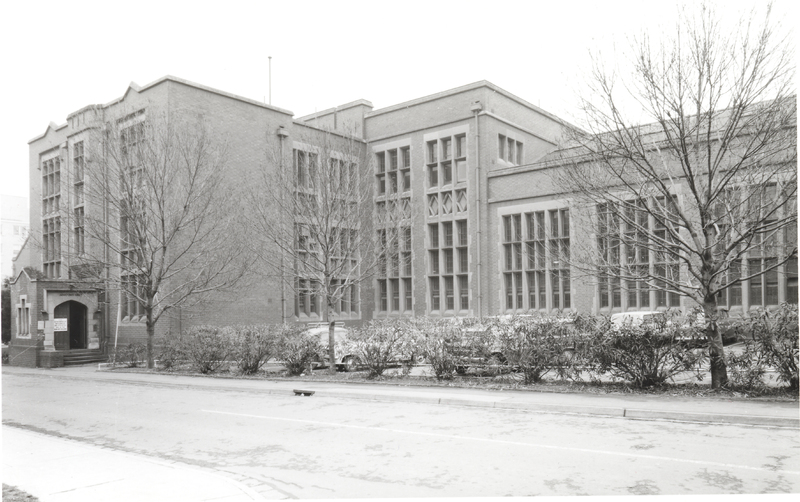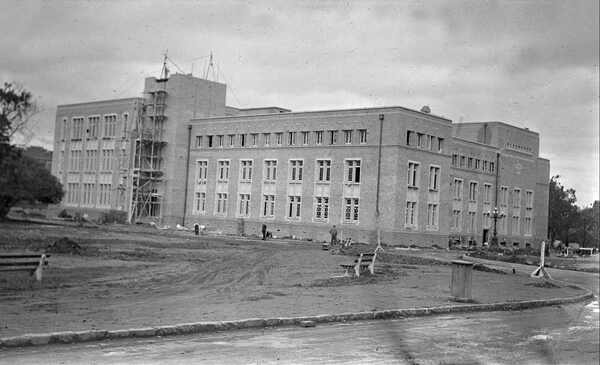Collegiate Gothic
Collegiate Gothic Style is an early 20th century adpatation of the 19th century Gothic Revival style in the United States. Gothic Revival was heavily used for churches and institutional buildings, whereas Collegiate Gothic was more specific to educational buildings such as school and universities. Percy Edgar Everett, the staff architect developed a Modern Collegiate Gothic Style with cream bricks in 1938, New Chemistry Building is an exmaple of it.
Collegiate Gothic buildings are typically rectangular in plan, and frequently have flat rooflines hidden by a stepped or crenelated parapet. Gothic arched entrances are highlighted by central towers and bay windows, as well as Gothic cast stone tracery. The exteriors can be of brick or stone, and are highlighted by bas relief decorative panels or plaques.

